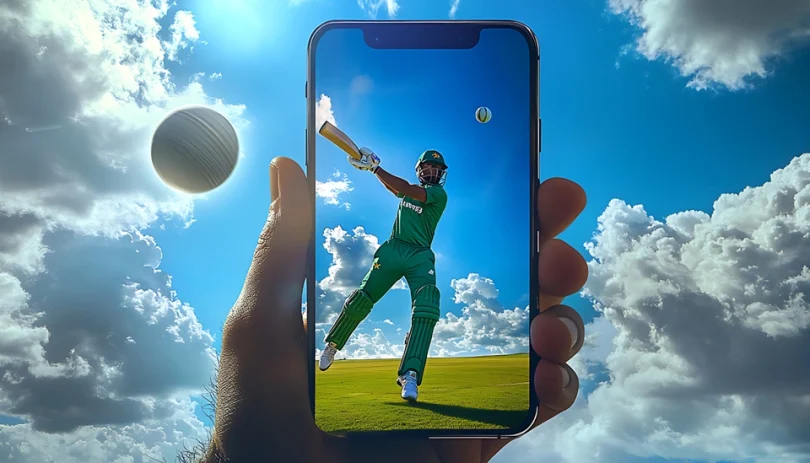Travel days pile on fast – gate changes, weather advisories, and a match that kicks off while the boarding line inches forward. That chaos wastes focus and drains battery, which is why a steady phone routine matters. The goal here is simple: keep one clean path to travel updates, keep one clean path to the score, and avoid risky taps on shaky networks. Nothing fancy, nothing slow. Just a short flow that works in an airport lounge, a hotel lobby, or a highway café. With a few choices made before leaving, checks take seconds, the screen stays readable, and the evening belongs to the trip rather than to a maze of tabs that never seem to land where they should.
Build Your One-Glance Flow Before Leaving
Start where attention is calm – at home. Pin a tiny note on the first row of the home screen. At the top, write the trip name and today’s route. Under that, add the official channels that matter: airline status, transit updates, local alerts. Move the score app beside that note, then hide lock-screen previews so strangers cannot read banners over your shoulder. Clear a couple of gigabytes so short clips and app fixes land cleanly. Set Do Not Disturb for the travel window while allowing starred contacts. These steps take minutes and remove the usual stalls – wrong redirects, loud pop-ups, and thumb hunts through old bookmarks that never load the right card when time runs thin.
Now fix the sports side so checks are quick and safe during lulls. Inside that same note, keep one live score link that opens cleanly every time. A direct card keeps motion small and choices clear; for cricket, a simple, single-page feed like this website fits that role well inside the note. The point is flow, not hype. Checks always begin from the same place and return there, which means the phone goes back to the pocket fast – less screen time in a crowded gate area, fewer risky taps on ad-heavy pages, and a better shot at catching a gate text or weather push the moment it matters.
Shared Wi-Fi On The Road — Use It, Don’t Trust It
Public hotspots are fine for reading advisories, maps, and headlines. They are a poor lane for payments, logins, and fresh installations. Join only the exact network name staff confirm. If a captive page asks for a social login that makes no sense for basic access, back away and switch to mobile data for any step tied to identity. Keep installs for hotel Wi-Fi or home Wi-Fi where speed is steady and attention is higher. Angle the screen away from others, lock orientation, so bumps do not flip the view, and keep quick checks short. This split is easy to remember – light browsing on shared Wi-Fi, private actions on carrier data – and it keeps control local when the lounge gets noisy.
When Signal Dips, Protect Battery And Attention
A weak tower or jammed café router turns simple taps into long waits. Fold this short list into the normal rhythm so it reads like part of travel, not another chore that gets ignored mid-trip:
- Lower brightness one step indoors to cut heat, then raise it again in bright light only when needed.
- Pause heavy cloud backups until the day ends, which keeps the lane free for alerts and live cards.
- Close other media apps so the score and advisories hold the fast path.
- Use wired or stable earbuds to avoid reconnect loops that eat battery.
- If the phone feels warm, lock the screen and set it flat in shade for a minute; snappy frames return once heat drops.
Payments, Logins, And Downloads — Keep Them On Your Terms
Rushed travel invites bad choices. A page that looks off, a logo that feels wrong, an installation that asks for odd permissions – these always appear when a bus line moves or a boarding call hits the ear. Treat them as a pause, not a puzzle. Stop, switch to mobile data, and re-enter through the saved note. Use a password manager, so long codes fill cleanly on a moving train. Say yes only to access that maps to a visible feature. Delay new installations until a trusted link and a steady connection are ready. This calm route takes a minute and saves hours later, which matters on days when energy is low and the next leg is close.
End The Day Ready For Tomorrow
Trips feel easier when the phone lands soft. Save one screenshot of the final score and one of the key travel update into a small folder named for the route. Clear recent apps, so background pulls stop chewing power. Put brightness and alerts back to normal. Delete any tab that felt off and replace it tomorrow with sources you trust. The whole plan stays short on purpose – one note, one travel path, one live score path, and a few habits that repeat without effort. After a week of use, the flow becomes second nature. Advisories appear on cue, the score shows up when asked, and the phone fades into the background while the journey takes the lead.







